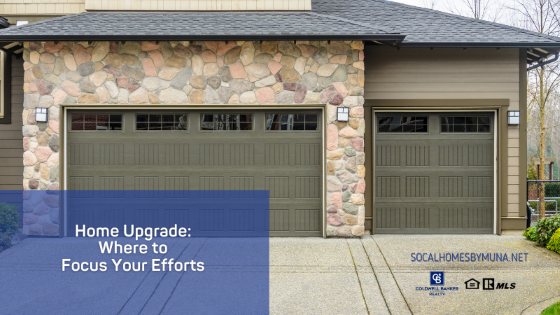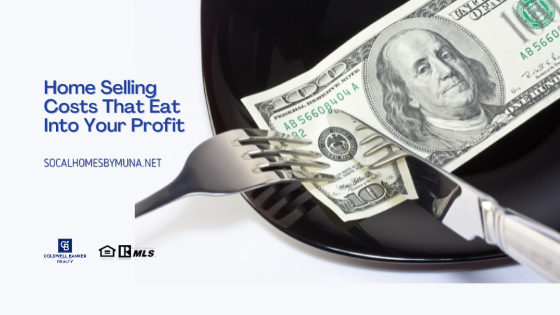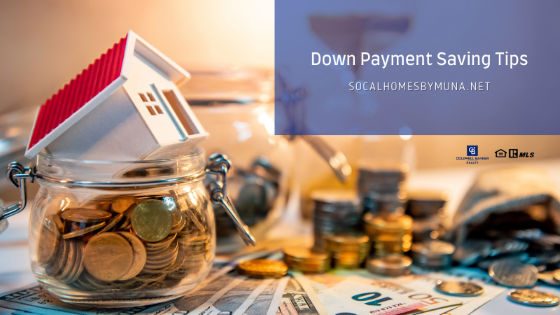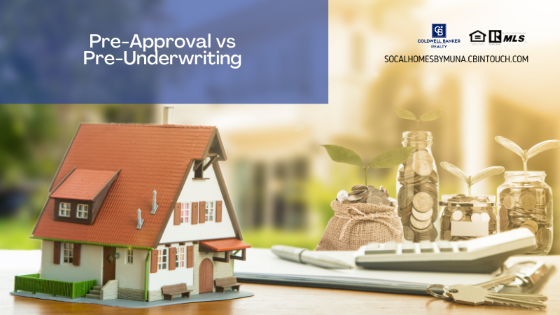Pricing Your Home to Sell

The days of receiving tens of thousands of dollars above asking in mere days of listing your Inland Empire home may be a thing of the past. Yes. We are still in a seller’s market. And, yes, we sometimes still see sellers who receive more than one offer on their homes. However, over one-third of the houses on the market in Riverside County saw a price cut last month. Staging your home and making necessary repairs before you list are only parts of the total home sale equation. If you wish to find a buyer quickly, you really need to price your home correctly to begin with. That means paying attention to current market trends.
Pricing Your Home to Sell
Hire a Local REALTOR®
How does hiring a local REALTOR® help you with pricing your home to sell? Well, a local REALTOR® knows the local market. They also know current market trends in that specific area. Fortunately, a good Inland Empire REALTOR® also has many resources at their fingertips to help you set a competitive price for your home that brings buyers to your door.
Using Comps
Your REALTOR® can research recently sold “comps” in the area for you. These are properties similar in size, location, and age to your own. Look for price reductions and how long they sat on the market before they went under contract. Multiple reductions and long days on the market usually mean the seller priced their property too high.
Withdrawn and Expired Listings
See how many sellers ended up withdrawing their listings from the market. Also, take note of expired listings. Withdrawn means that the seller decided to take it off the market. Expired means that the listing agreement between the seller and their agent ran out of time without a sale taking place. Ask your agent to find out why these listings either were withdrawn or expired. Many times, the answer could be due to listing it too high. However, that is not always the case.
Strategize
You can handle pricing your home one of two ways: at market value or slightly below market value. Either way, keep emotion out of the equation. Your REALTOR® will give you their opinion of a good list price based on comps and current market trends. And I highly recommend that you take their experienced opinion into account when you decide on a list price. Ask them if they believe listing it slightly below market value might work in your favor. Keep in mind that this is a gamble because you may end up only receiving one offer at that lower price. On the flip side, it might also encourage several buyers to put their offers in, creating a bidding war and driving the price up. Discuss this option with your REALTOR® to determine if that is a strategy you wish to pursue or not.
Muna Dionne, your Inland Empire specialist with Coldwell Banker Realty
Home Upgrade Areas to Focus On

With so many people spending more time in their homes over the last couple of years, millions of homeowners faced the reality that their properties needed some updating or renovation. What used to “work fine” no longer fits the bill. So, whether you plan on living in your Inland Empire home for a while or need to put it on the market soon, here is where you should focus your efforts with your home upgrade for the best return on your investment.
Home Upgrade Areas to Focus On
Flooring
Flooring has come a long way over the past several decades. Today’s buyers love wood flooring. And when I say “wood”, I mean wood laminate, vinyl wood planks, solid hardwood, and engineered hardwood. Carpeting works fine in the bedrooms. But kitchens, hallways, and main living areas need wood flooring. In fact, when you use the same flooring materials throughout all of the main living areas, you make your home’s floor plan appear much larger.
Kitchen
They say that the kitchen is the heart of the home. So, if your “heart” looks a bit worse for wear, you might want to focus your home upgrade efforts there. A bit of paint and new hardware for your cabinets and drawers goes a long way to update an outdated kitchen without breaking your bank. Do your countertops need some zhushing up? According to Better Homes & Gardens, the five best budget-friendly countertops are butcher block, concrete, laminate, solid-surface, and tile.
Bathrooms
Strapped for cash? One room that benefits really well from a home upgrade is the bathroom…especially, the master bathroom. Here, flooring choices can be very important. Replace a shower/tub surround with tile. Paint or replace the cabinets. Add new hardware. Get rid of the wall-sized flat-panel mirror and add one or two framed mirrors above the sink(s) in its place. Place a newer, nicer light fixture above each mirror as well. Newly tiled backsplashes look great in here, too. If you have a good tub in place, you might be able to reglaze it instead of replacing it altogether.
Garage Doors
Finally, this may sound odd, but replacing the garage doors brings you the second-best ROI of any remodeling projects you might tackle on your Inland Empire home. The first is adding/updating a manufactured stone veneer to the exterior of your home. Garage door replacement makes sense. After all, it takes up a huge portion of the front elevation of your home. At an average cost of $3800, it is well worth the monetary investment, too.
Muna Dionne, your Inland Empire specialist with Coldwell Banker Realty
Home Selling Costs That Eat Into Your Profit

You have probably heard the phrase “never count your chickens before they hatch”. Well, the same goes for your profits when selling your Inland Empire home. Just like buying a house, it also costs money to sell a property. So, before you count up all the profit you expect to receive, keep these home selling costs in mind.
Home Selling Costs That Eat Into Your Profit
Repairs
The majority of home buyers today want a turn-key property, not a fixer-upper. Falling behind on your regular maintenance tasks may cost you a pretty penny at the bargaining table. Smaller tasks should be tackled before you list by a reputable handyman. For major repairs (such as a roof replacement or HVAC overhaul), it might work more to your advantage to either lower your list price or offer a credit at closing. Replacing a roof in Riverside costs as much as $11,000+. But you only receive 72% of that cost back.
Professional Photos
Many homebuyers begin their search for Inland Empire homes online…even before contacting a real estate agent. Since the start of the pandemic, this number has only gone up. So, if you want to make a great impression (and bring buyers to your door), you need to showcase your property with high-qualify professional photos. Fortunately, many real estate agents work closely with photographers and videographers. They may even include photos and video as part of their services. If so, yay! It will not cost you extra. However, if they do not, it is still well worth the money to get a pro out to highlight your property’s best assets.
Landscaping
Never neglect your curb appeal. You might get away with an older paint scheme and slightly worn-out flooring. But buyers always want to see a nicely landscaped yard. Therefore, another one of the home selling costs that eat into your profit is hiring someone to make your curb appeal pop. Luckily, you can save some money by doing some of the work yourself.
Closing Costs
Yes, even sellers pay closing fees as part of their home selling costs. These include real estate commissions, transfer tax, title insurance, mortgage processing fees, escrow fees, and notary fees. You also pay any outstanding property taxes as well as a prorated water and sewage bill dependent upon the date of closing. Also, any remainder of your mortgage (including a second mortgage, if applicable) must be paid out of the money received for your home’s sale. If you used a real estate attorney for any part of your transaction, their fees must be paid at closing as well.
Muna Dionne, your Inland Empire specialist with Coldwell Banker Realty


 Facebook
Facebook
 X
X
 Pinterest
Pinterest
 Copy Link
Copy Link






